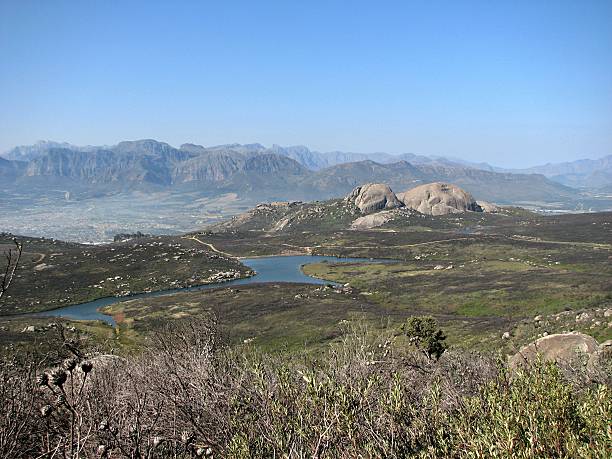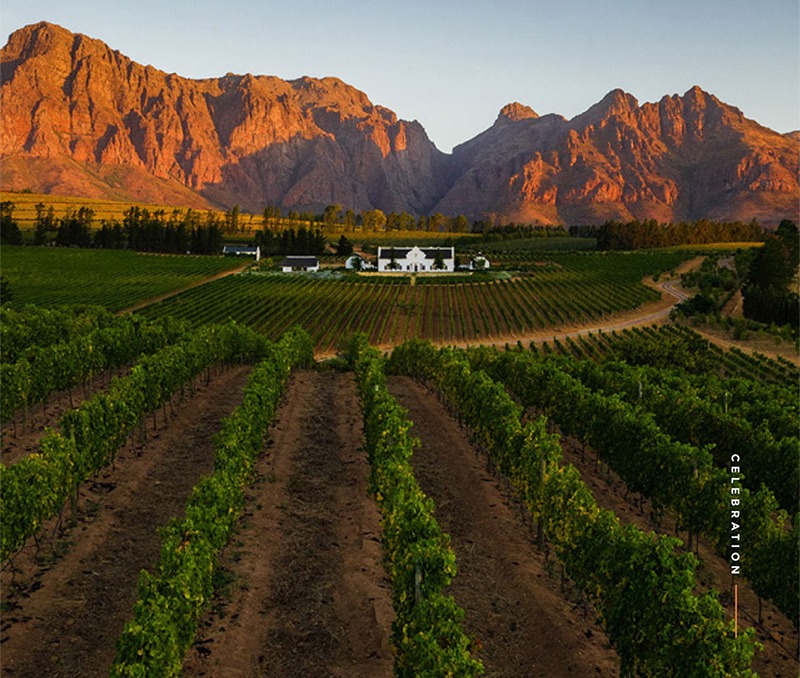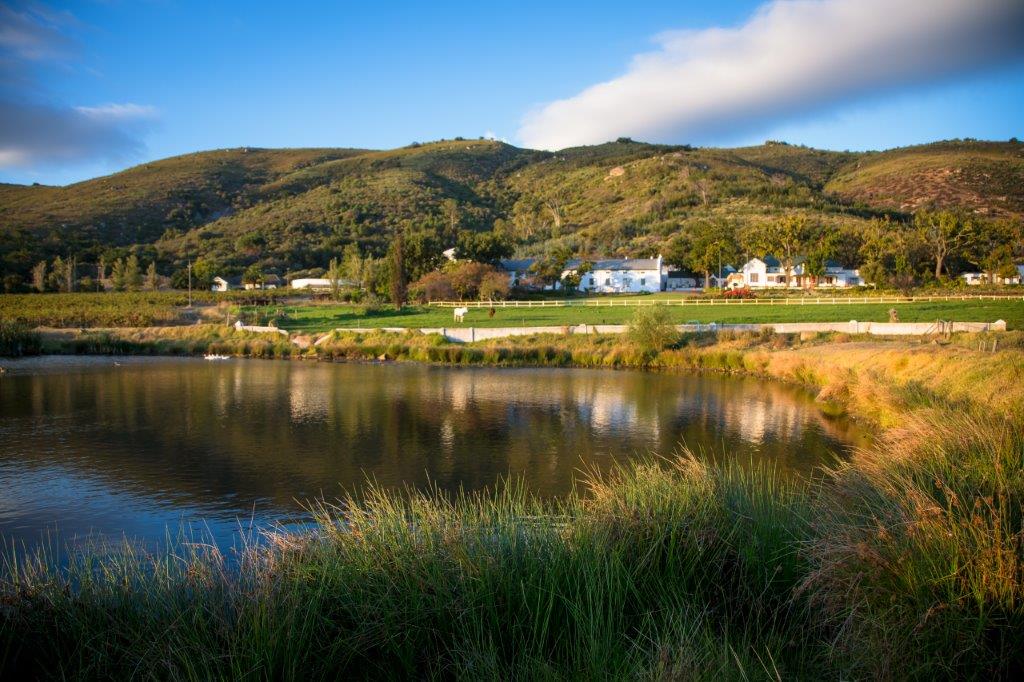Paarl is not only a town and a wine region but also boasts an outstanding landmark, Paarl Rock, a huge, rounded, smooth granite outcrop rising 542 metres above the town and visible from miles away. The Afrikaans name, Paarl, reflects the rock’s pearl-like appearance when it rains. It forms part of the larger Paarl Mountain and its Nature Reserve with many hiking trails.

Scattered around the mountain are Paarl’s wineries, some of the approximately 25, are close, others a short distance away. They are also a mix of large operations – KWV and Nederburg; historic – Landskroon, on the south-facing slopes; more recent ventures – Ridgeback, on northern slopes at the western end of the mountain and the very new – Brookdale, over-looking Paarl from the foothills of the Klein Drakenstein mountains.

Why choose Paarl for wine-growing? Each of the above privately-owned properties had different reasons. Tim Rudd, owner of Brookdale, saw the opportunity and the potential in the under-used area of land, he also wanted to produce wines from varieties associated with the Mediterranean, which he believed the area is suited to.
Ridgeback, a 60 ha mixed fruit farm when purchased by the original owner, was a cheaper option than land in Stellenbosch.
The first de Villiers arrived in South Africa from France in 1689. His descendant, Paul de Villiers 1 (it’s a first name recurring down the years), bought the farm Weltevreden, a portion of the farm Landskroon; history doesn’t recall why he made this choice. In 1963, Paul IV and his brother, Hugo consolidated the portions, Landskroon Estate being established in 1974.

Given the diversity of aspects and altitudes, many varieties can do well in Paarl, the choice being personal as well as site suitability. Chenin blanc and Mediterranean varieties were Tim Rudd’s choice and are showing how well they are suited on Brookdale.
Ridgeview was purchased as a mixed arable and fynbos farm – the fynbos remains - but the well-drained, decomposed granite soils were ideal for wine growing; after vines were planted the grapes were initially delivered to the local Co-op where they received top grading. Later, the first shiraz was awarded a Platter 5 star rating, which prompted the construction of an on-site cellar and several other varieties planted. Today, under the new owner, and with several competition successes, the decision was taken to reduce the range with a focus on Bordeaux varieties, both as varietal and blended wines, though shiraz is still made.
A similar mix is found on Landskroon, where, in the 1970s, Paul IV recognised the demand for quality varieties and planted cabernets sauvignon and franc, merlot and shiraz; chenin, sauvignon and chardonnay are now part of the mix. Historically, the first wine under the Estate label was a 1974 Cinsaut (wine had been made on the farm since 1874); in 2024, the Heritage Cinsaut celebrates its fiftieth vintage.
Given the Paarl wineries are scattered around Paarl Mountain and the Nature Reserve, presenting a cohesive picture is not so easy and something they have battled with over the years; how to resolve this situation?
It is an issue that has been much discussed, the view being held that the granite of Paarl Rock and the beautiful granite soils connects all the wineries and is the central cog of the region; from that, the wineries radiate their own styles.
Given the open land around many farms, wildlife is another issue to deal with. Fortunately, there are no grape-devouring baboons on Paarl Mountain, while the various Steenbokkie, Grysbok and Duiker are considered very much part of the farms and cause little damage, one tactic being to putting netting around new vineyards as a deterrent.
A trip around the Rock offers a diversity of new experiences.
Angela Lloyd